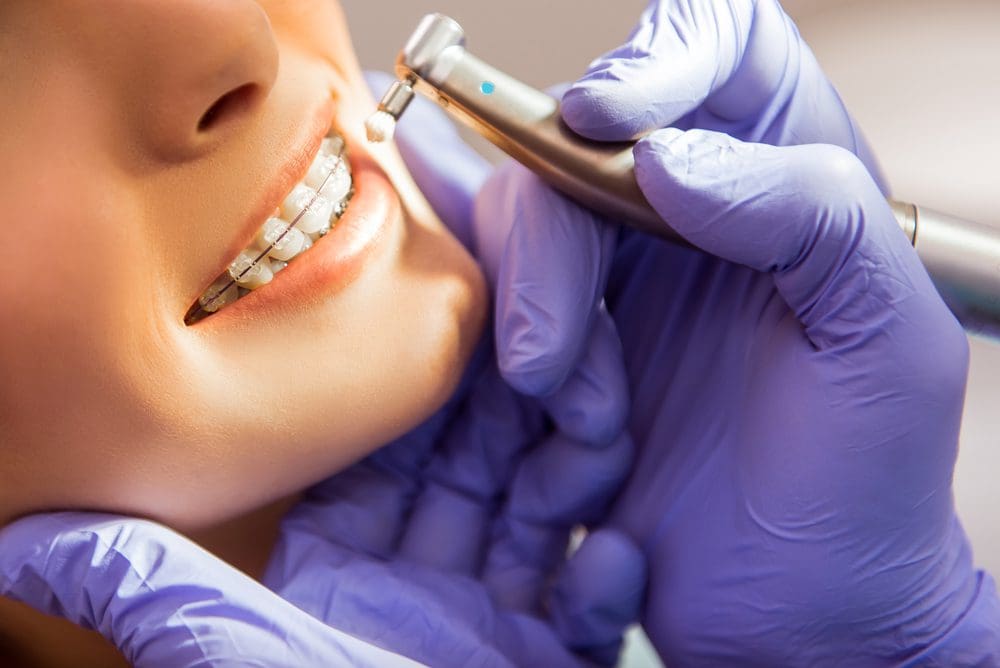Comprehensive Guide to Orthodontics Treatments for Remedying Dental Misalignments
In the world of orthodontics, the journey to achieving a flawlessly aligned smile involves a myriad of procedures tailored to fix oral imbalances. From conventional dental braces to undetectable aligners and also medical options, the field of orthodontics provides a variety of remedies to address varying degrees of dental irregularities. Comprehending the ins and outs of each treatment, including their devices, advantages, and possible drawbacks, is essential in making notified decisions regarding one's orthodontic treatment. As we navigate with the detailed overview to orthodontic procedures for remedying dental misalignments, the complex details of each technique will unfold, clarifying the path towards a functional and harmonious dental alignment.
Orthodontic Procedures Review

Regular adjustments and monitoring are important components of orthodontic therapy to make certain progress is on track and to make any required alterations along the means. By undergoing orthodontic treatments, people can not just achieve a straighter smile but additionally boost their overall dental wellness and function.
Typical Dental Braces: How They Work
When taking into consideration orthodontic treatments for dental misalignments, conventional braces attract attention as a time-tested approach for remedying teeth positioning. Standard braces contain braces, wires, and bands that work with each other to apply continuous stress on the teeth, gradually relocating them right into the wanted positioning. The braces are attached to the teeth utilizing an unique adhesive, and the cords are threaded through the braces. By changing the stress of the wires, orthodontists can manage the instructions and pressure applied to each tooth, assisting them into correct placement in time.
As stress is used to the teeth through the dental braces, the bone bordering the teeth is improved to support the new tooth settings. Clients will certainly require regular adjustments at the orthodontist's office to guarantee the braces continue to use the appropriate stress for reliable teeth movement.
Undetectable Aligners: Pros and Cons
Unnoticeable aligners offer a very discreet and convenient choice to typical dental braces for fixing oral imbalances. These clear, tailor-made trays are basically invisible when worn, making them an appealing choice for people looking for an extra visually pleasing orthodontic treatment. Among the primary advantages of unnoticeable aligners is their removability, enabling easier upkeep of dental health contrasted to conventional braces. People can remove the aligners before consuming or brushing their teeth, reducing the threat of food getting embeded the device and simplifying the cleaning procedure.

Surgical Orthodontic Options
Surgical interventions in orthodontics present viable options for attending to complex oral imbalances that might not be efficiently solved through traditional orthodontic therapies. While undetectable aligners and traditional braces can deal with many orthodontic concerns, certain instances call for medical intervention to accomplish optimum results. Surgical orthodontic alternatives are usually suggested for serious malocclusions, considerable jaw disparities, and instances where the underlying bone framework requires great post to read modification to attain appropriate alignment.
One typical medical orthodontic procedure is orthognathic surgical treatment, which includes rearranging the jaws to remedy practical concerns such as trouble speaking or chewing. This surgical treatment is typically carried out in partnership with an orthodontist who helps line up the teeth prior to and after the procedure. Surgical orthodontics might likewise entail treatments to expose affected teeth, remove excess periodontal cells, or improve the jawbone to produce a more unified face account.
Before thinking about surgical orthodontic choices, clients undertake a thorough analysis to identify the necessity and possible advantages of such interventions. cumming aligners. While surgical treatment may appear daunting, it can substantially enhance both the function and appearances of the smile in instances where standard orthodontic therapies fail
Retainers and Post-Treatment Treatment

Post-treatment care entails following the orthodontist's instructions carefully. This might consist of proper oral hygiene methods, participating in follow-up consultations, and wearing the retainers as prescribed. Failure to abide by post-treatment treatment directions can cause regression, where the teeth progressively relocate back in the direction of their initial placements. Consistent retainer wear, good oral hygiene, and regular oral exams are important for maintaining the results achieved through orthodontic surgery and guaranteeing the long-lasting stability of the fixed dental alignment.
Verdict
Finally, orthodontic procedures offer numerous choices for remedying dental imbalances. Standard braces use steel brackets and cords to move teeth into correct placement. Unnoticeable aligners provide More hints an even more discreet alternative yet may not appropriate for all situations. Surgical orthodontic options are readily available for much more extreme imbalances. Retainers are typically made use of post-treatment to preserve the brand-new positioning. Overall, orthodontic treatments can effectively enhance dental health and wellness and aesthetic look.
As we navigate via the extensive overview to orthodontic treatments for fixing oral imbalances, the intricate details of each approach will unfold, dropping light on the course towards a harmonious and practical dental placement. - invisalign
One of the most usual orthodontic therapies is the use of braces, which consist of steel braces and cords that use gentle pressure to slowly move teeth right into the wanted placement.When considering orthodontic treatments for dental misalignments, standard dental braces stand out as a reliable approach for correcting teeth positioning. Additionally, unnoticeable aligners may not be appropriate for complicated orthodontic concerns that call for even go more substantial teeth activity, as they are typically recommended for mild to moderate cases. Retainers are custom-made orthodontic devices designed to hold teeth in their fixed positions after the completion of orthodontic treatment.